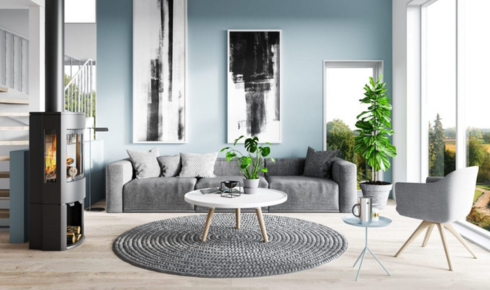Walk into any beautifully designed space, and something almost magical happens — your eyes instinctively know where to go. Maybe it’s a striking fireplace framed by stone, a grand window pouring in natural light, or an art piece that quietly commands the room. That central element, whether bold or understated, is what designers call the focal point. It’s not just a design trick — it’s storytelling through space.
The Soul of a Space Lies in Its Focus
Every room needs an anchor, something that gives it a heartbeat. Without one, even the most expensive materials can feel scattered and soulless. In focal point architecture, designers intentionally guide your visual journey. It’s the art of balance — creating harmony between what stands out and what supports it. Think of a cathedral’s altar, a hotel’s statement staircase, or even a minimalist home where a single textured wall does all the talking. Each of these structures relies on focus to evoke emotion and meaning.
The trick isn’t in making something “louder” than the rest, but in crafting a sense of natural attraction. When done right, a focal point doesn’t compete — it invites. It’s like a charismatic person in a room who doesn’t have to raise their voice to draw attention.
When Function Meets Feeling
A great focal point is never just decorative. It carries a story — a purpose. A kitchen island, for instance, can be both a social hub and a sculptural centerpiece. A staircase that curves gracefully through open air might serve as a bridge between floors and a symbol of movement and flow.
That’s where focal point design steps in. It’s the thoughtful fusion of form and function. Designers use scale, light, contrast, and texture to create hierarchy — a rhythm for the eye. Picture a rough brick wall behind a smooth marble countertop, or a vintage chandelier suspended in a modern loft. The contrast tells a narrative, blending eras and emotions in one frame.
Interestingly, focal points can change with perspective. A designer might craft one experience when you enter a room and another when you sit down. That’s the beauty of it — the design interacts with you. It’s alive.
The Subtle Power of Simplicity
Sometimes, the strongest focal points are the quiet ones. A serene courtyard framed by walls, an empty niche bathed in light — these speak in whispers, not shouts. In today’s cluttered visual world, restraint feels revolutionary. It’s not always about grandeur; sometimes, it’s about grace.
Minimalist homes often rely on a single piece of furniture, a work of art, or even a shadow to command presence. The play of light becomes the focus. The emptiness becomes intention. These subtleties make a space feel thoughtful, almost meditative.
Designers understand that focus doesn’t have to be physical — it can be emotional. Maybe the focal point is the view beyond the window, or the sense of calm the space brings. That’s design maturity — knowing when to step back and let atmosphere take the lead.
Modern Interpretations: From Homes to Public Spaces
Today’s architects and designers are reimagining what “focus” means. A public plaza might center on a digital art installation that reacts to movement. An office lobby could revolve around greenery that softens corporate edges. Even retail spaces have learned that attention doesn’t just mean flash; it means connection.
The digital age has changed our visual literacy — we process design faster and expect more meaning from it. That’s why focal point designs are evolving to tell human stories again. They’re not about trends; they’re about feelings — curiosity, nostalgia, wonder. Whether through color, symmetry, or storytelling, the goal remains the same: to make people feel something the moment they walk in.
Crafting Focus: The Designer’s Mindset
Creating a successful focal point requires empathy. A good designer asks, How will people experience this space? What do I want them to notice first? How should they feel standing here?*
Lighting plays a crucial role. Natural or artificial, it directs emotion as much as sight. Textures add depth — think matte against gloss, rough beside smooth. Even scent and acoustics play supporting roles in creating focus. Every sense contributes to the experience.
There’s also the matter of restraint. Not every corner needs a spotlight. A well-placed focal point gives a room direction, while multiple competing elements cause chaos. The best spaces breathe because they know when to pause.
Why Focus Matters More Than Ever
In an era of visual overload — from social feeds to retail billboards — spaces that know where to direct your attention feel grounding. They remind us of what’s essential. Whether it’s a home, gallery, or café, we crave environments that feel composed yet personal.
Focal points do that beautifully. They simplify the chaos of visual noise, guiding us gently toward what matters. They make us slow down, notice, and connect.
The Human Side of Design
Great design isn’t about perfection; it’s about presence. You don’t have to be an architect to feel when a space is working. You sense it — that ease, that pull, that moment where everything just fits.
Maybe that’s the secret: the best focal points don’t just draw your eyes; they draw your emotions. They make you belong in a space. They give it identity.
So next time you step into a room that feels inexplicably right, pause and take a look around. Chances are, there’s something quietly leading the way — a balance of purpose and beauty, holding the space together like an invisible thread.
That’s the quiet genius of focus — when architecture stops being just walls and starts being an experience.

